This Day in Science June 25, 1924 – First Tuberculosis Vaccine
On June 25th, 1924 the tuberculosis (TB) vaccine Bacillus Calmette Guerin (BCG) was released by Albert Calmette and Alphonse Guerin. Today, 90 years later, this is still the most widely used vaccine for TB worldwide.
Estimated prevalence of tuberculosis per 100,000 people in 2007, per country.
TB is a highly infectious disease that targets the lungs and can be fatal. It is caused by a few strains of mycobacteria, most commonly Mycobacterium tuberculosis (M. tuberculosis).
Photo Credit: [Janice Carr, Centers for Disease Control and Prevention’s Public Health Image Library].
Scanning electron micrograph at 15549x magnification provides detailed view of M. tuberculosis bacteria.
TB can be easily transmitted through the air from infected individuals through coughing, or sneezing. The bacteria can also survive in spit for at least 24 hours. This revelation caused women to shorten the hem of their skirts as they feared they would drag spit into their homes.
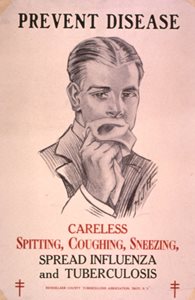 Photo Credit: [Rensselaer County Tuberculosis Association, U.S. National Library of Medicine]
Photo Credit: [Rensselaer County Tuberculosis Association, U.S. National Library of Medicine]This poster from the 1920s depicting a well-dressed healthy young man demonstrating the proper way to cough and sneeze in public, aimed to counter the stigma that the TB is associated with poverty and uncleanliness.
With the great success of the vaccine for smallpox in the 18th century by infecting individuals with cowpox, a less infectious strain, they had hoped to follow the same path for tuberculosis. However after a failed clinical trial in Italy in the late 19th century, the bovine tuberculosis strain Mycobacterium bovis (M. bovis) was found to be just as deadly as M. tuberculosis.
Calmette and Guerin developed the vaccine by culturing M. bovis on a specific medium (food source) that weakened the strain with each successive re-plating. After 11 years of subculturing the bacteria every two weeks, the strain was attenuated enough that it could not infect even the most susceptible animal, a guinea pig.
Photo Credit: [Medical Blogs]
Camille Guerin (1863-1933) and Albert Calmette (1872-1961) working in the lab.
The vaccine was first tested in humans two years later in 1921. In 1924 the results were released to the public and the vaccine was given its current name (Bacillus Calmette Guerin) in honor of the scientists who developed it.
Photo Credit: [TB Online]
Bacillus Calmette-Guerin (BCG) vaccines.
TB vaccination was routine until the 1970s in Canada and the USA, and is now only given to those who are at high risk.

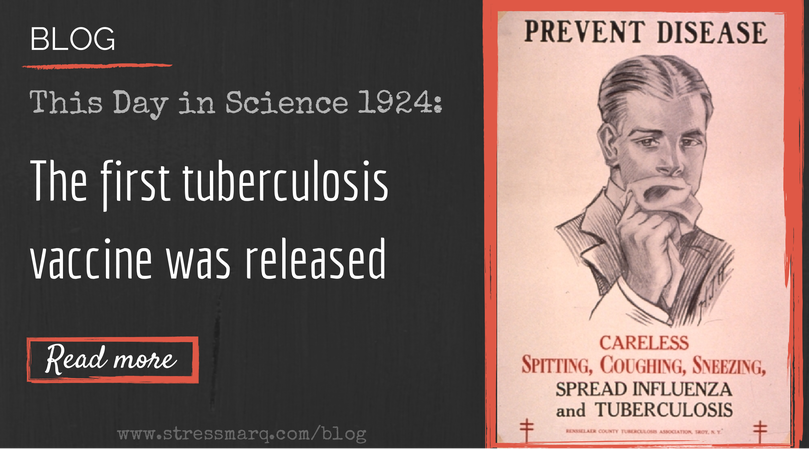
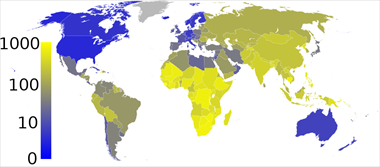
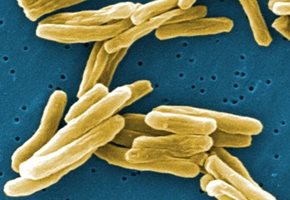
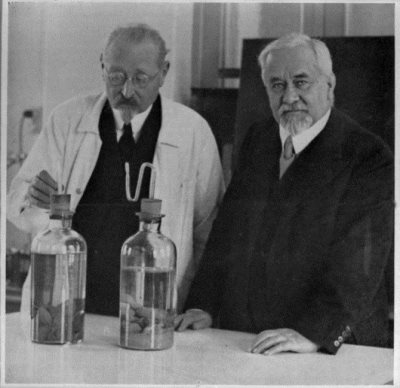
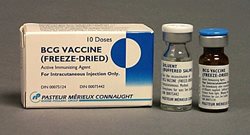
Leave a Reply